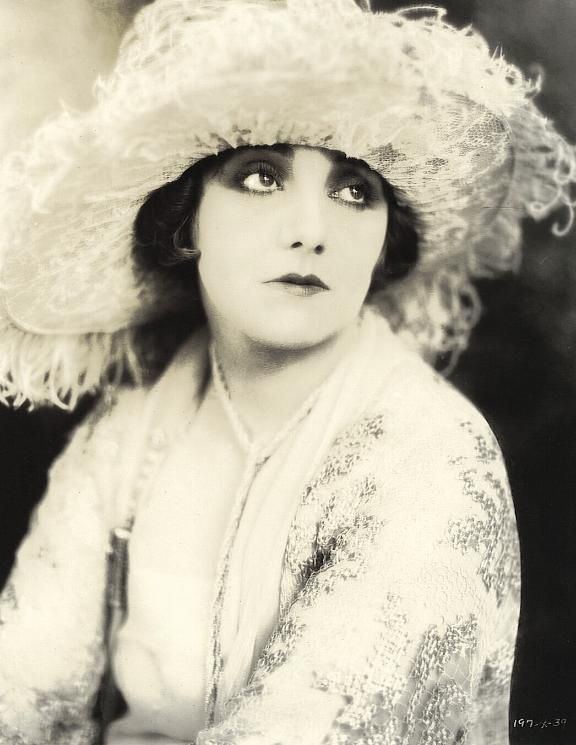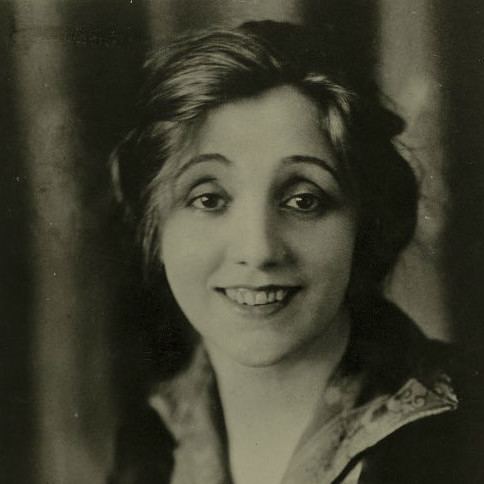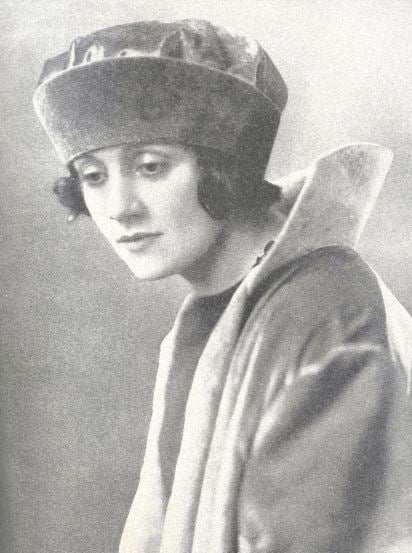Occupation Actress Name Laurette Taylor Children Dwight Taylor | Years active 1912-1946 Role Film star | |
 | ||
Full Name Loretta Helen Cooney Born April 1, 1883 ( 1883-04-01 ) New York City, New York, U.S. Died December 7, 1946, New York City, New York, United States Movies Peg o' My Heart, One Night in Rome, Happiness Spouse J. Hartley Manners (m. 1912–1928), Charles A. Taylor (m. 1900–1910) Similar People J Hartley Manners, King Vidor, Clarence G Badger | ||
Laurette taylor in wealth and wisdom theater and silent film star
Laurette Taylor (April 1, 1883 – December 7, 1946), born as Loretta Helen Cooney, was an American stage and silent film star. She is considered to be one of the greatest, if not the greatest, American stage actresses of the 20th century, and her work would influence an entire generation of actors.
Contents
- Laurette taylor in wealth and wisdom theater and silent film star
- Silent movie broadway star laurette taylor in peg o my heart
- Personal life
- Stage Work
- Motion Pictures
- Approach to Acting
- Death
- Legacy
- Notable fans
- Songs
- Filmography
- References

Silent movie broadway star laurette taylor in peg o my heart
Personal life

Laurette Taylor was born in New York City on April 1, 1883, of Irish extraction to James and Elizabeth (nee Dorsey) Cooney as Loretta Helen Cooney.

She married her first husband, Charles A. Taylor (born January 20, 1864, South Hadley, Massachusetts – died March 21, 1942, Glendale, California), on May 1, 1901, aged 18. They had two children, Dwight (died 1986) and Marguerite (died 1995), but divorced around 1910. In 1912, she married British-born playwright J. Hartley Manners, who wrote the play Peg o' My Heart, a major and enduring personal triumph for Taylor, who toured in it extensively throughout the country. The play's success inspired a 1922 film version starring Taylor and directed by King Vidor. A six-reel print of the film survives in the Motion Picture Division of the Library of Congress. The marriage was successful and Taylor remained married to Manners until his death in 1928.
Stage Work

Taylor began attracting critical acclaim virtually from her first known performance on Broadway in The Great John Ganton in 1908 and building her reputation in such stage productions as The Ringmaster, Alias Jimmy Valentine, Seven Sisters, Lola Lola, The Bird of Paradise, and Peg o' My Heart, which ran on Broadway from December 20, 1912 to May 1914 (a total of 603 performances) cemented her fame and reputation with audiences as a skilled actress. She toured the nation with the play, which reopened on Broadway at the Cort Theater on February 14, 1921, and ran for another 692 performances. She achieved great success starring in such other productions as Out There, One Night in Rome, The Wooing of Eve and the special production, Laurette Taylor in Scenes From Shakespeare. In the latter production, she performed scenes from Romeo and Juliet, The Merchant of Venice, and The Taming of the Shrew. Few of Taylor's performances survive on celluloid.

In 1924, Taylor starred in Happiness, directed by King Vidor, which told of the adventures of a young shopgirl, "Jenny Wray", who learns that riches do not necessarily lead to happiness. The cast included Hedda Hopper and Pat O'Malley. The same year, Taylor starred in another screen version of Manners' dramatic play, One Night In Rome, in which she played the dual roles of Duchess Mareno/Madame Enigme. Taylor seems to have enjoyed making One Night in Rome as she kept a personal print of the movie to always show guests at her home, running it over and over again.
Taylor's outsized personality, mercurial moods, and eccentricities became legendary. Her friend Noel Coward spent a weekend at the home of Taylor and, inspired by that remarkable visit wrote, in just three days, his devastating, witty comedy of manners Hay Fever (1925). The play, a widely praised comedic dissection of a family whose theatrical excesses drive their unsuspecting visitors to distraction, was a major hit from the moment of its August 6, 1925 debut. It also caused a serious and permanent rift in the friendship of Taylor and Coward.
She suffered from severe alcoholism for many years, a condition which sharply limited her appearances from the late 1920s throughout her career. In 1938, she headed the cast in a revival of Outward Bound and did not appear again until her re-emergence in Williams' The Glass Menagerie in 1944; her performance received nearly unanimously rapturous reviews and won her the New York Drama Critics Award for Best Actress of the season.
Motion Pictures
Taylor planned to make her film debut in Peg o' My Heart, but the film version of the hit play was coveted by nearly every screen actress, including Mary Pickford, who made an offer considerably in excess of the highest amount ever paid for the picture rights to a play or a story. The rights to the film were coveted because of the production's established popularity. Almost any actress in the famous role would be assured of a resounding success, however Taylor doggedly clung to the movie rights for her own use, should she ever commit to appearing in a film. It took years for the play to be filmed and released. King Vidor remembered in his autobiography, A Tree Is A Tree:
"I soon landed a job at the old Metro studio on Romaine Street – the assignment: to direct Laurette Taylor in Peg O' My Heart. Although I had never seen Miss Taylor, her name carried with it a certain magic to my young ears."
The play was considerably expanded for the film version, and the final production was an immediate success with audiences. Taylor went on to make another adaptation of one of her stage successes, Happiness, and then a third and final film for MGM, One Night in Rome.
She never appeared in another film, although David O. Selznick did invite her to film a sound test for a role in his 1938 film The Young in Heart, which Taylor did, but she declined the part and actress Minnie Dupree was cast. (The sound film test exists and has been shown on TV from time to time).
In preparing interviews for what became Broadway: The Golden Age, Rick McKay kept asking each person "Who influenced you the most" and time and time again, Laurette Taylor's name was mentioned. McKay ended up devoting an entire section to Taylor, and it includes a section on her 1938 screen test.
Approach to Acting
Taylor wrote an essay on acting, titled "The Quality Most Needed", which was included in some of the early editions of the text "Actors on Acting". In it, Taylor muses on the importance of imagination over physical beauty for the actress wishing to truly create art. She sharply criticizes performances where you can "see the acting", and warns against paying too much attention to the traditions of acting, saying it "cramps creative instinct". To Taylor, the imaginative actress will leave you with a feeling that you can imagine the character's conduct "[i]n any position, aside from the situations involved in the actions of the play". Taylor applauded the imaginative actress who "builds a picture, using all her heart and soul and brain", not for the audience but for herself.
Death
Taylor died from a coronary thrombosis on December 7, 1946, at age 63. She is interred in The Woodlawn Cemetery in The Bronx, New York City. Her great-granddaughter, Chloe Taylor, is an actress in Los Angeles, California.
Legacy
Taylor is considered to be one of the greatest stage actresses of the 20th century, often compared to Sarah Bernhardt and Eleonora Duse. Taylor's performance in The Glass Menagerie has become synonymous in theater with a great comeback after years of decline.
Writing after Taylor's death, Tennessee Williams paid tribute to "the great warmth of her heart", saying, "There was a radiance about her art which I can compare only to the greatest lines of poetry, and which gave me the same shock of revelation as if the air about us had been momentarily broken through by light from some clear space beyond us."
In 1960, the play Laurette, starring Judy Holliday and directed by Jose Quintero, closed out of town in Philadelphia due to Holliday's battle with breast cancer. Produced by Alan Pakula, the play had a supporting cast that included Patrick O'Neal, Joan Hackett, and Nancy Marchand.
For years, film director George Cukor tried unsuccessfully to launch a film version of Taylor's life. In 1963, a musical adaptation of Laurette opened on Broadway. The musical, titled Jennie starred Mary Martin in the title role. Arnold Schulman's book is credited as having been suggested by Marguerite Courtney's Laurette, with a score by Howard Dietz and Arthur Schwartz. It only ran for 82 performances, receiving mediocre reviews. A one-act play, Opening Night, appeared briefly off-Broadway in October 1963. Peggy Wood portrayed Fanny Ellis, a once famous star who is preparing for a performance in her dressing room. Many thought Fanny was actually Taylor. Wood appeared with Ruth Gates. The play ran for only 47 performances.
In the 2004 documentary Broadway: The Golden Age, by the Legends Who Were There, numerous Broadway veterans all cited Taylor's performance in Glass Menagerie and Outward Bound as the most memorable stage performances they had ever seen. A rare sound film clip of Taylor in a screen test made for David O. Selznick's studio is included in the documentary. The test, for a role in the film The Young in Heart reportedly did not meet the approval of studio executives.
Notable fans
Songs
Peg Struggles to Save Her Cousin
Peg's Spiteful Cousin Hides a Secret
Peg Arrives
Montgomery Reveals the Will
The Truth Is Finally Revealed
Peg's Aunt Is Shocked
Peg Meets Jerry
Overture
Jerry Proposes a Happy Ending
Jerry Invites Peg to a Dance
Peg's Quick Tongue Crosses With Her Aunt
